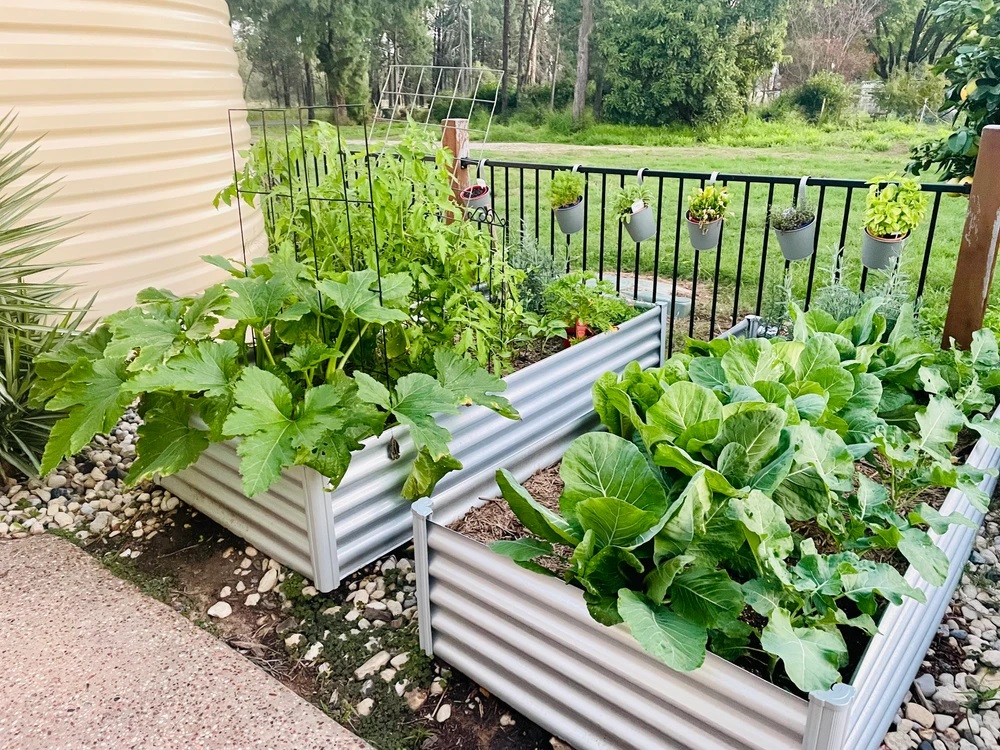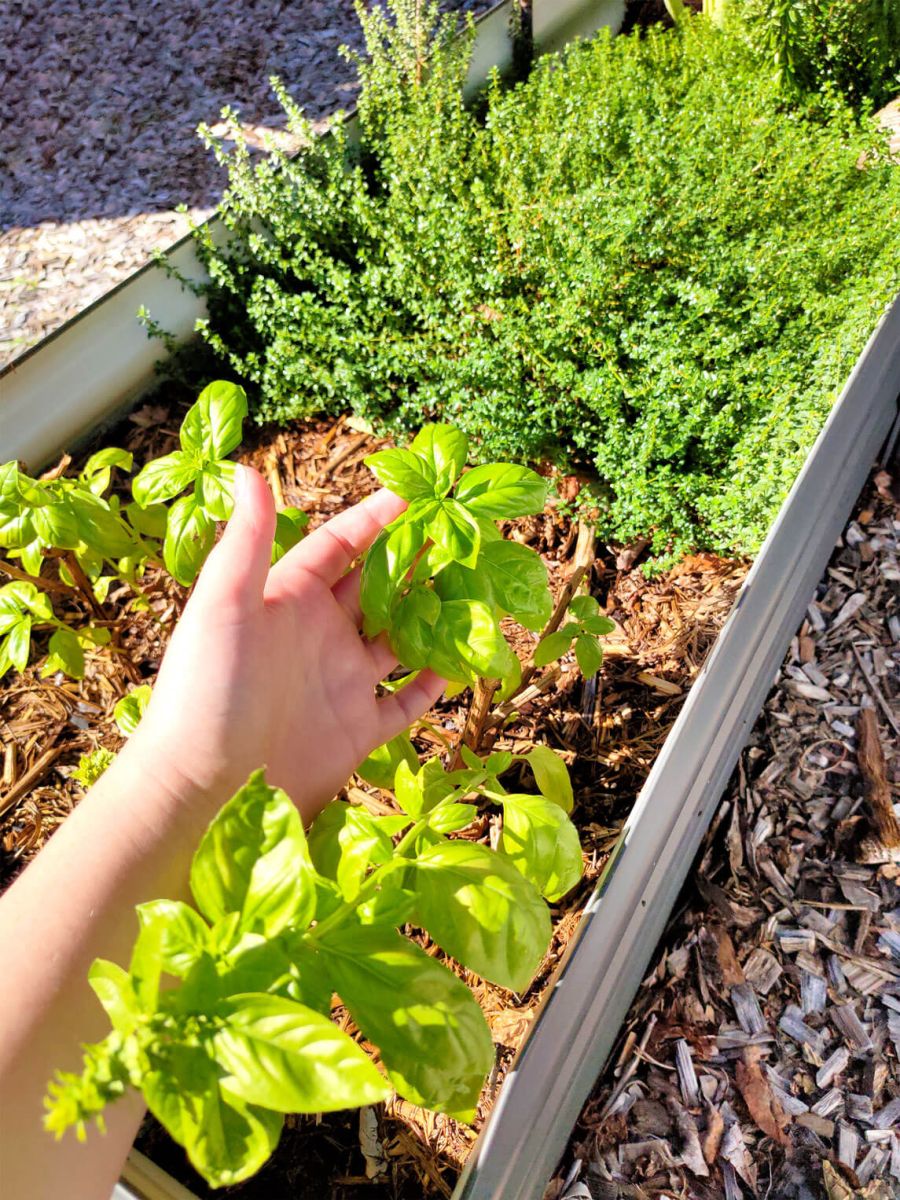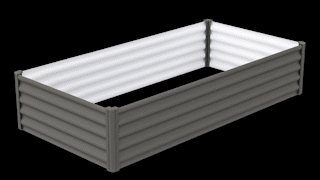Home gardening is on the rise, whether as a fun hobby for yourself or family, or to grow your own produce and keep those grocery bills down. But starting a garden bed from scratch, while rewarding, can be daunting. So, we’re here to help and outline some things you should consider to get you on your way, your veggie patch up to scratch and growing strong!
Picking a location is where you should start. Most people have a place in mind already, but have you considered the possibilities? How much sun or shade does this location get; most herbs and vegetables need between 6-8 hours of full sun each day, so you need to watch your yard to see how the sun shifts around, as this can impact your choices. A lighter area is better, however if you have a shady backyard don’t fret. There are plenty of plants that thrive in partial shade, like parsley and chives for instance. Just make sure you take the time to research the types of plants that will thrive in your space.

Access and convenience to your garden bed is also vital to ensure you’re able to continue to maintain your produce, is there access to water nearby, or maybe a fence against one side? You may even consider a raised garden bed to work at height as opposed to directly on the ground.
All of these considerations play an important role, not only in the growth of your herbs or veggies, but in what plants are the most suitable to your available environment.
There are countless ways to grow a garden, you can use in-ground garden beds, raised garden beds, wall planters, timber planters…. And the list could go on and on. But how do you choose the best option? Each method of garden bed provides its own benefits, check out our blog Raised garden beds vs in ground garden beds for a detailed breakdown.
If you’re an absolute beginner, our best tip is to start small and simple. You are better off being happy with a small, quality harvest, then being overwhelmed by the maintenance of a larger one while you’re still learning. You can always increase the size of your garden as you go and gain confidence.
To do this easily, and for best bang for your buck we suggest starting with a small, raised garden bed. These can be easily erected in your most suitable yard location, are versatile in what produce can be grown, and more beds can easily be added as your garden grows. They have an additional benefit of compartmentalising your plants, allowing for different soil makeups depending on your plants of choice; ie one for herbs, one for veg, one for fruit... But make sure you consider all options available to you for your new garden.
You’ve decided on where and how you want to grow your plants, but you don’t yet know what to plant. The most simple answer is to grow what you like to eat or are most likely to use. Your family loves to put fresh herbs in meals? Maybe grow some rosemary and basil. Or do you love fresh tomatoes in salads or on pizza? There’s plenty of varieties available for you to choose from.

When you’ve picked your produce, consider the size of your garden bed, how much space and the depth of soil each of your plants require to grow happily. You want to maximise the use of your garden bed, without crowding it.
For example, climbing zucchini on a trellis or against a fence, with short rooted leafy greens like lettuce at ground level and carrots underground will maximise the space and nutrients available to each of your plants. The best bet is to follow the tags on your seedlings or seed packets, they can direct you specifically for that plant choice. But remember, you’re starting completely from scratch, and it is all a learning process. The more you read and practise your gardening the easier it will become to continue and grow larger gardens, with more diverse, fresh produce. You can even start experimenting and look at companion planting for herbs and vegetables.
With so many different soil options in the market, it’s easy to get overwhelmed! What soil do I need for my raised garden bed? If you’re filling from scratch and new to the gardening game, keep it simple – use a pre-mixed bag that is a good mix of compost and organic matter to start and finish with high quality topsoil. You want your topsoil to be dark and crumbly - you know it’s good soil when it smells earthy and fresh. Avoid clay based soils as these restrict water flow and end up compacting down heavily, creating poor growing conditions. If you’ve decided on a bigger area and need more than just a few bags, touch base with your local garden centre to buy high quality product in bulk.
With an inground bed, you may be at somewhat a disadvantage as you’re restricted to the native soil in your area. You can improve this soil, however this requires additional effort in digging up and loosing the ground and mixing through high quality fertilisers and top soil in line with your intended garden type. You want at least the top 30cm to be ready and set for your plants.
Location – check!
Planter – check!
Produce – check!
Now it’s time to prep and put it altogether. If you’ve purchased a raised garden bed as your beginning option, it’s time to set this all as per the instructions, just slide in each panel to the corner posts and put on the caps to lock together. Easy as that! Place the garden bed on a flat surface (grass, concrete, dirt, whatever works best) and get ready to fill. We strongly suggest following the method when filling your raised garden bed.
If gardening directly on the ground, prep your area by removing the grass and loosening the dirt, to make it easier to mix in some high quality soil and fertiliser.

Have you seedlings and/or seeds ready to go, and place this around your bed to ensure each plant has the space required, refer to the labels on each. Once happy, plant away! Give the entire garden bed a good water, and then place your final mulch layer on top to keep in the moisture. And there you have it, a garden bed completely from scratch, ready to go! Time to enjoy watching your plants growing and the produce that comes from it all.
Happy Gardening!